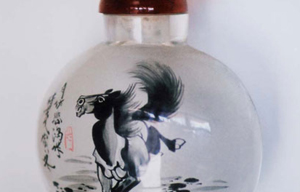Food
Korean classics
Updated: 2011-09-17 07:39
By Pauline D. Loh (China Daily)
Eating Korean is no novelty in China and there are plenty of places offering Korean food. But, nothing beats the adventure of exploring a different cuisine at home, says Pauline D. Loh.
The first time I was introduced to Korean cuisine by a colleague in Hong Kong I was frankly amazed by the number of little dishes that appeared on the table as appetizers. There were little dishes of cold tofu with sesame sauce, barely blanched bean sprouts served with chives, spinach smothered in a garlic sauce, braised chestnuts carved into perfect hexagons, salty anchovies lightly spiced with chilli paste ...
Those little dishes took up such a lot of space on the table that I wondered if there would be room for the main courses.
For a Chinese, eating Korean is a little familiar and yet a little strange. The ingredients are mostly recognizable, and we are eating with chopsticks and bowls - even though the chopsticks are mainly stainless steel, as are the bowls.
But here, the similarity ends. Korean food has its own unique characteristics and kitchen rules. For example, color plays a very important part, and there are five colors that each dish must have - black, red, yellow, green and white. There is also very little oil used.
This is most indicative in the classic Korean one-dish meal - the bibimbap. Often served in a hot stone bowl, the slightly sticky rice is covered by a neatly arranged topping of vegetables and meat that is a rainbow of flavors.
Typically, the green comes from blanched spinach topped with a dusting of white sesame seeds while the red (or rather orange) comes from braised grated carrots. The black is from the toasted seaweed strips used as garnish, along with a bright yellow egg yolk. More yellow and some white are reflected in soya bean sprouts. Finally, tender strips of meat colored brown or red by bean or chili paste complete the spectrum. More white, of course, is from the snowy rice hidden under the jewel tones of the topping.
Come to think of it, Korean cuisine is very healthy if you make the right choices. Bibimbap has more vegetables than meat, and you can quickly fulfill your daily quota of four helpings of vegetables in one dish. That is certainly the right idea, where flavored meat is used as seasoning rather than the highlight of the meal.
Of course, a bibimbap set often includes soup, usually miso flavored or a clear tofu soup, and little side dishes of kimchi and salted anchovies.
Another of my favorites is the Korean cold soba noodle. The chewy texture of Korean soba is very different from the Japanese version, which is less tactile.
Also, cold Korean soba is served with an icy and tart soup base that wakes up any taste buds gone sluggish.
Both classic Korean dishes are surprisingly easy to do, and perfect for entertaining on a cool autumn evening. True, there is a lot of preparation beforehand, but the pleasure of sharing such satisfying food makes up for the extra effort, don't you think?
If you have questions, feel free to e-mail me at paulined@chinadaily.com.cn.
E-paper

The snuff of dreams
Chinese collectors have discovered the value of beautiful bottles
Perils in relying on building boom
Fast forward to digital age
Bonds that tie China. UK
Specials

Let them eat cake
Cambridge University graduate develops thriving business selling cupcakes

A case is laid to rest
In 1937, a young woman'S body was found in beijing. paul french went searching for her killer

Banking on change
Leading economist says china must transform its growth model soon
